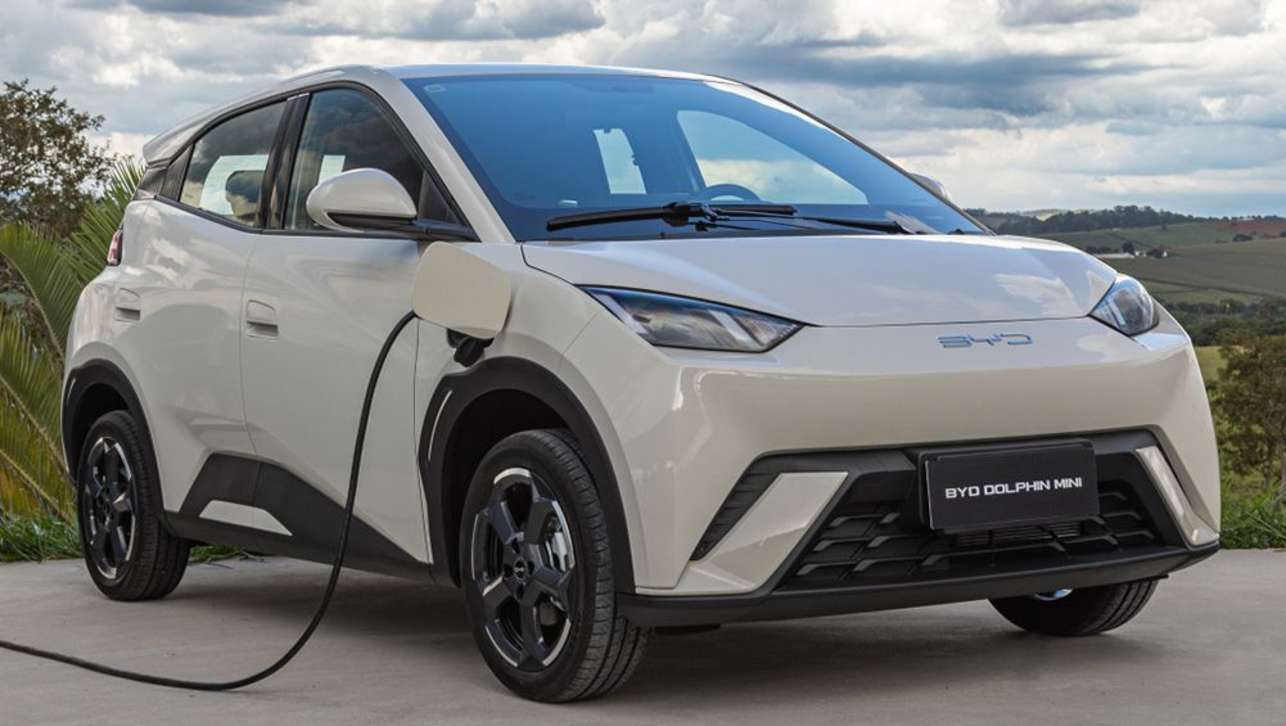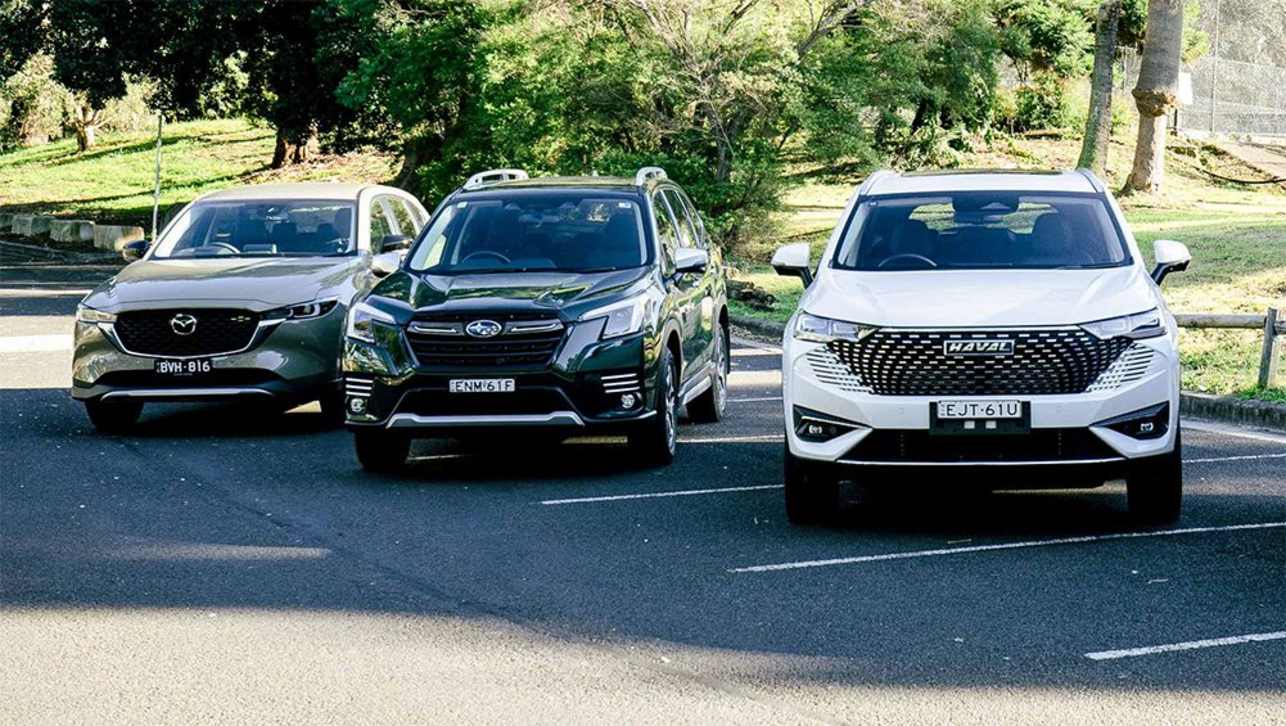Mitsubishi is undertaking the process of replacing its range of dated offerings in Australia with new-generation models like the Outlander and Triton. But one of its best-sellers, the ASX small SUV, might not be replaced in our market until 2026.
The current ASX is 13 years old, and despite now being on its third facelift, is decidedly outdated compared to many of its competitors. While it is still selling well off the back of a long warranty, keen pricing, and brand reputation, it is well overdue for a platform change to something which can support modern safety, emissions, and electrification demands.
Speaking to Australian media, Mitsubishi Motors CEO, Takao Kato explained: “We are seriously studying the issue - ASX as you know is very well accepted by our Australian customers - we want to introduce a new ASX, but at the same time we’re developing many kinds of electrified vehicle. Which takes priority? That’s what we’re working on right now.”
Mitsubishi faces another dilemma - it has two small SUV successors, but neither seem to meet its criteria for the Australian market. The most obvious shoo-in is the European-market ASX successor, which is a re-badged Renault Captur. This car is up-to-date with Euro emissions and safety regulations as well as a plug-in hybrid, and is also already sold with a Renault badge in Australia, but flies in the face of Mitsubishi’s future plans to increase the brand’s unique identity, or “Mitsubishi-ness” as the company puts it.
“We’re not sure that it can be an ‘ASX’” Kato said of the Captur-based version from overseas, “People know it is a Renault, and not a ‘real Mitsubishi’ and it might not be well accepted by the Australian market”
The other option is the production version of the XFC concept which is set to be unveiled in Indonesia imminently, but Mitsubishi’s panel of executives revealed to Australian media that this model would be based on the same dated platform as the current ASX and Eclipse Cross, which raised concerns over its applicability to the Australian market.
“It might be difficult because of regulation issues” explained engineering boss, Hiroshi Nagaoka, who clarified that the issues include safety and emissions, while he said it was possible for the brand to upgrade the model to suit Australian regulations, it was not planned with electrification in mind, and therefore may never see the light of day in hybrid-hungry Australia.
.jpg)
“How can we upgrade the performance and function of this model to meet these requirements? That’s the question for us right now” explained Kato. He would not commit to a preference for the Australian market, despite the XFC maintaining its “Mitsubishi-ness” through its bespoke Mitsubishi Motors design, rather than a model pulled from one of its Renault Nissan Mitsubishi alliance partners.
One thing is clear, though, the brand is re-orienting its focus as its 2025 mid-term plan draws to an end. Japanese executives explained the brand’s sole focus has been on the South East Asian market as part of its “Challenge 2025” mid-term product plan, which will see the release of the Triton, XFC, and the plugless hybrid Xpander MPV.
That’s not to say the brand’s global panel wasn’t concerned about the impending situation in Australia, as the ASX and Eclipse Cross reach the end of their lifecycles. “To sell to 2026 will probably be difficult,” Kato explained of the ASX. “If new regulations are issued, once it’s announced the schedule will be very advanced and it is very difficult to adjust to that,” he said, hinting at the ADR 85/00 regulations which forced many brands to quickly pull models on dated platforms from Australia, including the Mitsubishi Mirage.
“Eclipse Cross is also an issue for us to study. ASX and Eclipse Cross are a similar size, so we should merge these into one,” he added.
.jpg)
What solution does this leave Mitsubishi Australia with? Speaking further on the topic, Mitsubishi’s local managing director, Shaun Westcott explained that it may, in fact, need to be an entirely new model built with the Australian market in mind, but there could be a longer than expected wait.
“Having an ASX replacement is very important for us. We’re doing everything we can to get an ASX replacement. You heard from Kato-san himself, they’re working very hard to get a vehicle for us. It’s not a simple answer. It’s a complex issue.
"There’s the XFC concept, and there’s the Renault Captur re-badge. What hasn’t been explained yet is that those are the bookends. It’s not two absolutes, it’s not that-or-that.
"You heard Kato-san talk about Mitsubishi-ness and the desire that our products should have a Mitsubishi character. We achieved that with Outlander. It has the same platform as a Nissan, but it has the personality of a Mitsubishi. So it may be that. It may be a Renault-type platform with more Mitsubishi-ness,” he said.
.jpg)
While the XFC met the Mitsubishi-ness requirements, Westcott was almost certain it would fall foul of ANCAP’s stringent five-star requirements, and upgrading it for Australia may prove prohibitively expensive.
“The XFC in its current form can’t be used because of ANCAP requirements. If we took that XFC platform, we would have to re-engineer the entire car for the Australian market because the requirements for ANCAP are not the requirements for other markets where we sell that model.
"If you take a number - 15 - 20,000 vehicles and you look at the investment costs to re-engineer, re-design the car for ANCAP requirements, it’s many many millions of dollars to sell that many vehicles a year, it doesn’t add up.
“This doesn’t mean XFC is off the table entirely. This is an important enough product in our market that if we make that investment it won’t be wasted in other markets to bring that model to Australia.
_0.jpg)
“That’s why you can’t get a direct answer today, because there are some very complex engineering and financial questions behind this. When Kato-san says there’s some ‘intense studying’ going on, there’s a lot of pressure coming out of Australia for that vehicle. He supports that Australia needs an ASX, but it’s about the numbers.
“It’s not black-and-white, the ASX European version would be a shoo-in, we’re pushing for more Mitsubishi-ness, but it requires more investment. The question is, how far do you go? What’s the investment? What’s the return on investment, and we hope we can have some answers for you soon.
“This is not going to be a normal development cycle. This is not seven or eight years. This will be a fast catch-up,” he said.











.jpg)
.jpg)


.jpg)
.jpg)
.jpg)

.jpg)
.jpg)
.jpg)
.jpg)
.jpg)
.jpg)
.jpg)
.jpg)


.jpg)

Comments